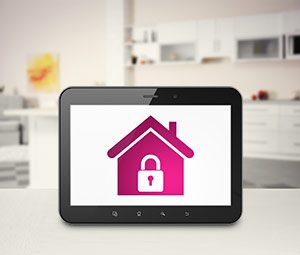 Smart home devices put you at all kinds of risk. Your house can spy on you, your devices can listen to you and they can even identify when you aren’t at home. The connectivity and convenience these devices are built with have advantages and disadvantages. You don’t have to stay at risk; you can boost your security and stay safe from hackers instead!
Smart home devices put you at all kinds of risk. Your house can spy on you, your devices can listen to you and they can even identify when you aren’t at home. The connectivity and convenience these devices are built with have advantages and disadvantages. You don’t have to stay at risk; you can boost your security and stay safe from hackers instead!
The Risks of Internet of Things
Smart home devices are meant to bring household devices together to communicate with us and each other. We see them in the form of thermostats, appliances, alarm systems, surveillance cameras, smart locks and connected wearable devices. By default, they are open and available to the internet; however, this risks our security and could leave you exposed to hackers.
Certain devices track your location, and they could give hackers information about your daily patterns and routines by remotely accessing your smartphone applications. The data found on wearable devices tracks your current location and the information found from alarm systems identifies exactly when you’re not at home.
5 Tips for How to Protect Yourself
- Secure your wireless network
- Make sure that your wireless network is protected by wifi protected access II (WPA2) and that you have a strong and complex password.
- Give the network a unique name. Don’t make it obvious with your first or last name, or don’t use your phone number as your username or password either – that could be very easy to figure out and hack into
- Be strict about who can access your network, and never make it public
- Create two separate wifi networks
- Use one network for computers, tablets and smartphones which should be used for secure online banking and shopping. The second network should be used for smart devices. Separating these two will enhance the protection of your online connections
- Keep your passwords strong
- Be sure the first thing that you do when you get a smart home device is to immediately change the default password that it comes with. Usually, it’s admin and that’s a hackers first guess
- Change each password to be much more complex, and ensure it’s different than other passwords you’ve used
- If you’re able to change the usernames as well, that’s also a terrific idea. It would be made even harder for a hacker to access your network
- Use a firewall
- A firewall on your network allows you to control and restrict incoming connections
- Smart devices include details about ports, network protocols and the IP address. Enabling a personal firewall will block unwanted traffic to specific ports, and restricting ports will certainly keep you safer
- Firmware updates
- Check the manufacturer’s website if there are any firmware updates available. They often push out updates and patch vulnerabilities, and if you receive a notification about this, definitely make these updates.
With these 5 tips, your smart home devices will be so secure that hackers won’t have anything on you! You’ll be able to enjoy the convenience of internet of things without experiencing the security vulnerabilities.
 Smart home devices put you at all kinds of risk. Your house can spy on you, your devices can listen to you and they can even identify when you aren’t at home. The connectivity and convenience these devices are built with have advantages and disadvantages. You don’t have to stay at risk; you can boost your security and stay safe from hackers instead!
Smart home devices put you at all kinds of risk. Your house can spy on you, your devices can listen to you and they can even identify when you aren’t at home. The connectivity and convenience these devices are built with have advantages and disadvantages. You don’t have to stay at risk; you can boost your security and stay safe from hackers instead!